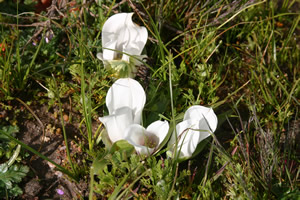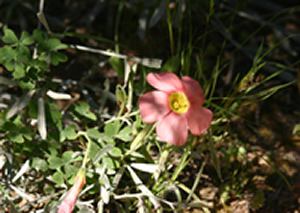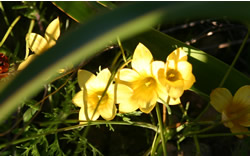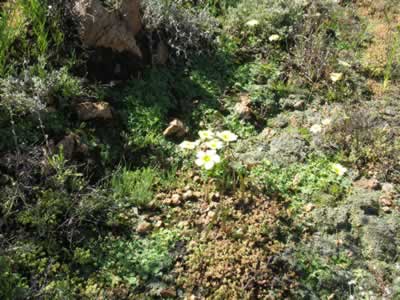


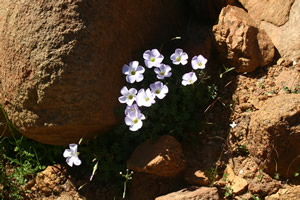

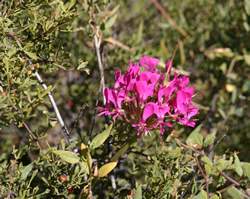
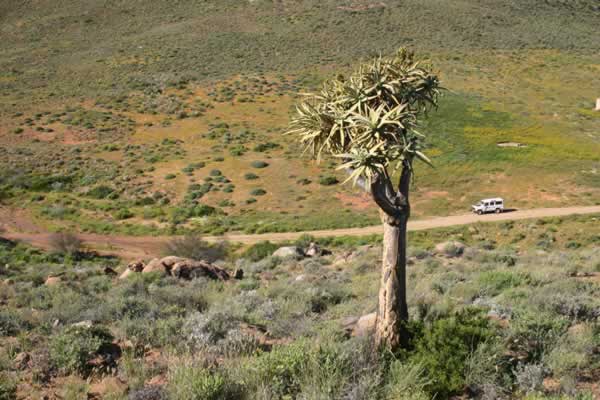
Tree aloe
A huge variety of aloes grow throughout southern Africa. Some are adapted to winter rains and some to summer rains, some to damp and others to drought. They all produce flowers varying from light yellow to deep red which are laden with nectar and attract the sunbirds which probably do most of the pollinating.
Aloes are not endemic to Namaqualand but there are many in Namaqualand that are also common to the north in Namibia. This is an example, the tree aloe or Kokerboom (quiver tree).
The dead branches are easily hollowed and very light; very suitable for carrying arrows.The trunks are, or were, made into traditional houses by the Nama shown on the previous page.
The yellow Bulbinella on page 1 is also an aloe
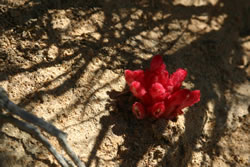
Rooipoppies, Hyobanche sanguinea, a curious little parasitic plant that is just s bunch of red flowers that are apparently sweet to eat.
(I googled this Afrikaans name and came upon only one entry. Someone told me this entitled me to a prize. When google picks this up, I suppose there will be two.)
